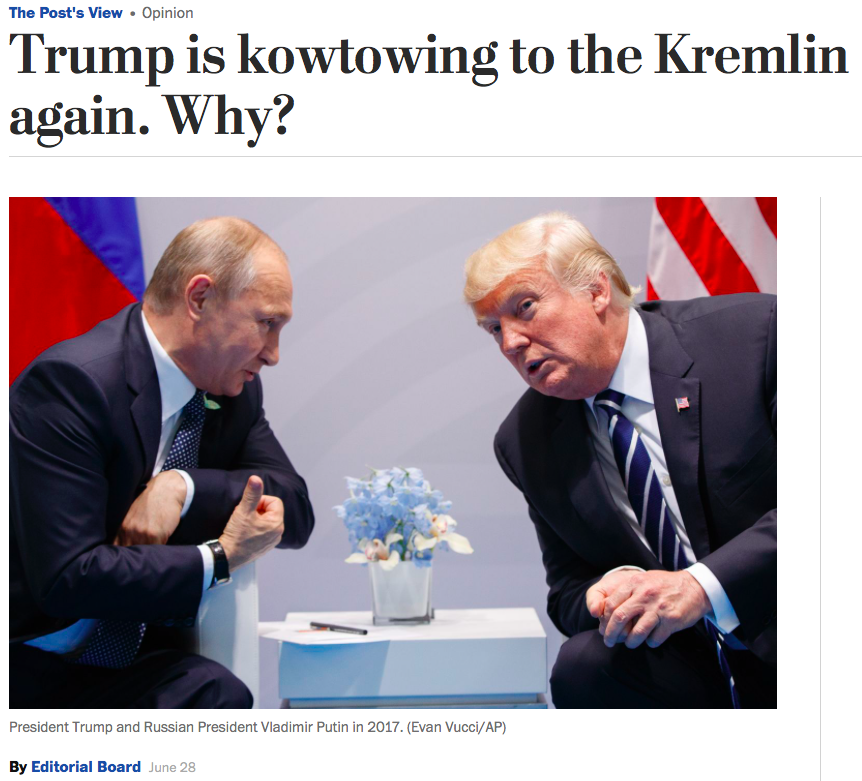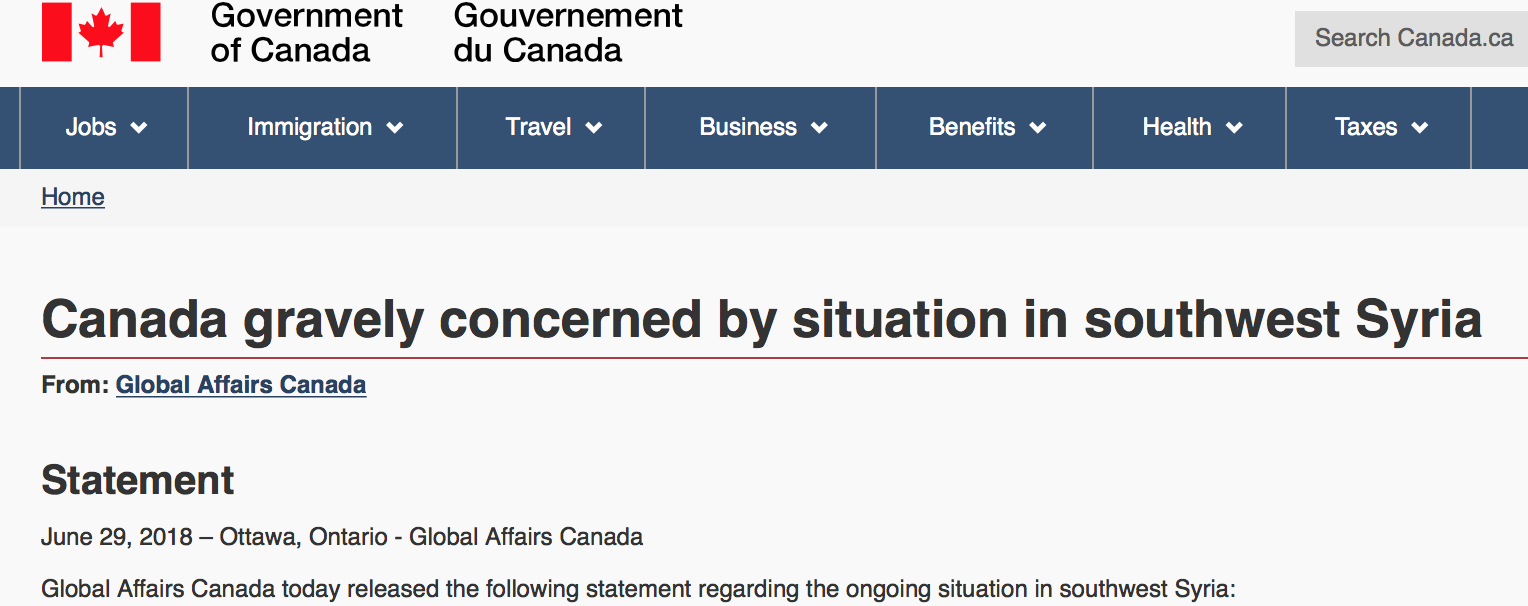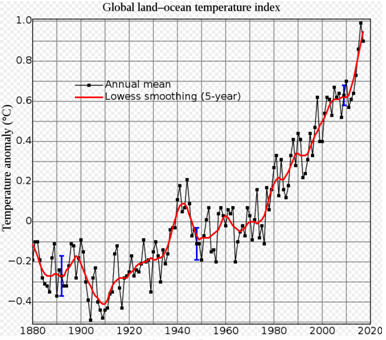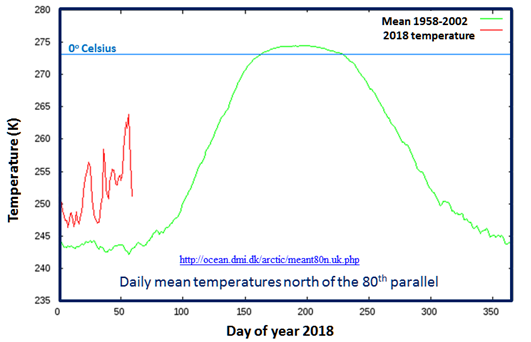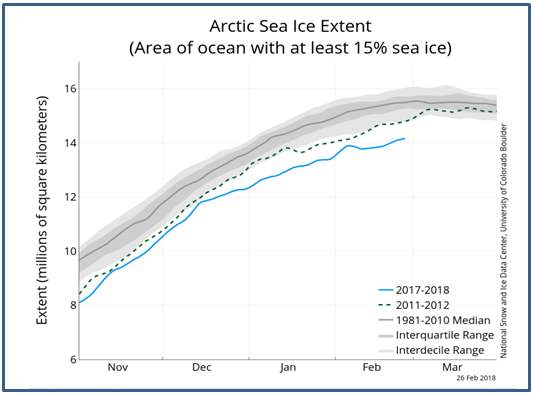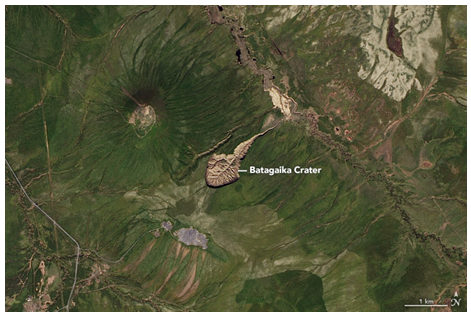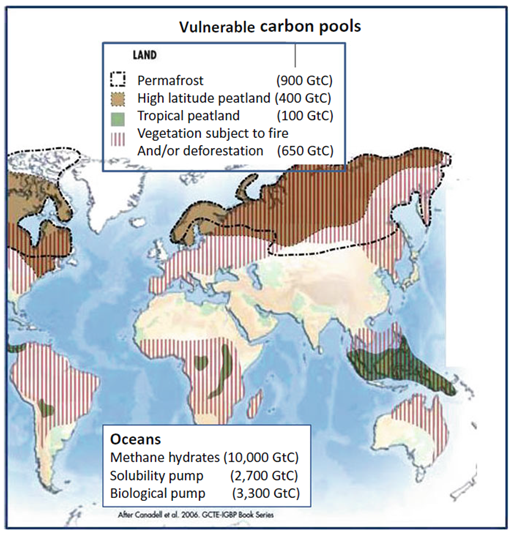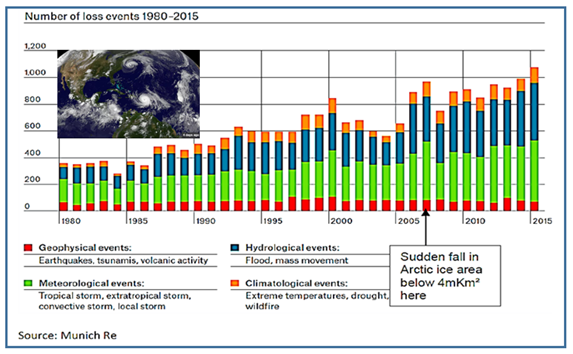This article was first posted on GR in January 2016
Our guest this week is Swiss historian Dr. Daniele Ganser, author of the seminal book NATO’s Secret Armies: Operation GLADIO and Terrorism in Western Europe, who joins us for a fascinating (though at times unsettling) conversation on the subject of Operation GLADIO.
Shortly after WWII a Europe-wide network of secret armies was organised under the aegis of NATO, tasked with providing military and intelligence resistance in the event of a feared Soviet invasion. Modelled on the resistance movements of the war years, many of these “stay behind” units remained faithful to their original mandate. But by the early 1960s – under the pressures of anti-communist politicking and flirtations with the Far Right – some of these groups began to morph into something more sinister, linking up with extreme right-wingers who carried out acts of false-flag terrorism, harassment of left-wing parties and coups d’état.
But was this morphing simply an unforseen consequence of the unaccountability and instability of the network itself? Or was it, at least in part, engineered by the very Anglo-American establishment which gave birth to the project in the first place? And to what extent, therefore, can such acts of terror be seen as manifestations of ‘the strategy of tension’, carried out by the State against its own citizens for the purposes of control at home and geopolitical gain abroad? (We also discuss: Operation Northwoods, the so-called War on Terror, 9/11 and the recent Charlie Hebdo attacks.)
Original Audio Notes
Transcribed by Sarah Brand & Julian Charles
Julian Charles: Hello everybody, this is Julian Charles of TheMindRenewed.com, coming to you, as usual, from the depths of the Lancashire countryside here in the UK. Today is the 27th of January 2015, and I am very privileged to be able to welcome to the programme Dr. Daniele Ganser, who is author of the seminal book,NATO’s Secret Armies : Operation GLADIO and Terrorism in Western Europe. Dr. Ganser is a Swiss historian specialising in contemporary history since 1945 and international politics, whose research centres in peace studies, geostrategy, covert warfare, resource wars and economic policy. He teaches at the University of St. Galen and the University of Basel, and is also founder and Director of the Swiss Institute for Peace and Energy Research, which is also in Basel. Dr. Ganser, thank you for joining us.
Daniele Ganser: Thanks very much for having me.

JC: It’s great to be speaking to you at long last. I’ve given very cryptic information about you in my opening remark, so could you give us a fuller impression of the work that you do?
DG: Yes, the information you provided is correct. I am forty-two years old, have two kids, and live in Switzerland. I research secret warfare, looking at resource wars, special operation forces, secret services, and I’m interested in peace research and in human rights. So, I’m an activist academic, one of those academics who feel it’s not right that we’re stuck in this world of violence.
JC: Now, we’re going to be discussing the specific issue of Operation Gladio (as it’s normally called), and we’re going to be centring in your research that led up to your book, NATO’s Secret Armies. I understand that your book was based on your PhD studies, so what prompted you to get interested in this subject in the first place?
DG: I did my studies here in Switzerland and wrote my first book before my PhD. Every student of history here in Switzerland – and I guess it’s the same all over the world – has to search for a topic for his Master’s thesis. So, I looked into the subject of the Cuban Missile Crisis, the CIA and the Bay of Pigs Invasion that took place in the 1960s when the Americans tried to overthrow Fidel Castro. That was a really fascinating, because throughout my time in Swiss high schools we never learned anything about secret warfare; our history teachers never broached the subject. Even when I pursued my University degrees, the subject never came up. It was only at the end of my studies, while doing my Master’s, that I had my first glimpse into secret warfare: that secret services exist; that the United Nations, and its Security Council, and governments lie to each other. I was baffled. I was twenty-five years old at the time, and I thought, “This is interesting; I want to know more.”
JC: It is interesting. We’re brought up to have faith in our governments. I think that’s understandable, but along with that goes this kind of assumption: “Well, they would never lie to us.”
DG: That’s right. Whilst researching the CIA’s secret Bay of Pigs operation, the invasion of Cuba in April 1961 aimed at toppling the Government of Fidel Castro, I read the UN Security Council documents covering that period and found the content actually quite surreal. These official transcripts revealed a conversation between the Cuban representative and representatives of the five member countries of the UN Security Council: France, England, the US, Russia and China. The Cuban representative tells them: “Cuba is being attacked by the CIA who are trying to overthrow the Government”, to which the American Ambassador responds: “This is all nonsense! This is probably false information.” Then the Cuban representative says: “No, no! We are being bombed right now; it’s not fake.” Then the American Ambassador says: “Ah yes, you are being bombed, but according to my sources that’s probably disaffected pilots from the Cuban Air Force dropping bombs on their own country before leaving in protest against Fidel Castro’s dictatorship.” It’s hilarious, but that’s actually in the records. Then to add to the hilarity, the British and French Ambassadors in the UN say: “If my colleague from the US says this, then we believe him, totally.” And the Chinese and the Soviets go mad: “It’s all nonsense!” So that really was the start of my interest in secret warfare.
JC: And that led to your research into Gladio itself. How easy did you find that research? Did you find that governments were open in revealing their information?
DG: It was really my interest that guided my steps. I tried first to establish whether it was a fact that NATO had secret armies. So I went back to the records and looked at the November 22nd 1990 Resolution of the European Parliament, which I have here, and which states: “The European Union Parliament protests vigorously at the assumption by certain US military personnel at SHAPE (Supreme Headquarters Allied Powers Europe) and in NATO of the right to encourage the establishment in Europe of a clandestine intelligence and operations network.” By this I understood there was a secret network in Europe against which the European Union was protesting, and NATO was declining to respond. So it was like a fight between the big guys: the European Union on the one hand and NATO on the other.

I found this very interesting, so I looked further into the details and discovered that the Italian Prime Minister, Giulio Andreotti, had confirmed the existence of a secret army in Italy. And it was very funny, because the French President at the time, FranÇois Mitterand, said: “No, we didn’t have a secret army.” Then Andreotti said: “Oh yes, very much so, there was a meeting in 1990 and the French were part of it.” So, Paris was really embarrassed, because they had to retract their denial and admit that they had a stay-behind army. It was a scandal with countries contradicting each other. Suffice to say that in the end I had enough solid data to confirm absolutely and beyond any doubt that NATO had secret armies, called Gladio in Italy and stay-behind in other countries.
JC: I can imagine that it must have been difficult to pick through all the claims, counter-claims and propaganda, and decide what’s the truth in this. Anyway, I want to ask you to explain what Gladio is. I suspect many people will know what it was, but there will be some people who will have never heard of it before. So, could you give as an idea of what Gladio basically was?
DG: Yes, gladio is the word for a short double-edged sword, a weapon used by gladiators in ancient Rome. During the Cold War the Italian military secret service,Servizio Informazione Sicurezza Militare, had a branch called Gladio, a top-secret part of the Italian Secret Service. It was preparing to fight for two things, and that’s where it all becomes rather delicate. One: In the event of a Soviet invasion of Western Europe – so we’re talking about Italy, France, Germany, Denmark, Norway, Switzerland, etc. – this secret network of soldiers would have fought as a guerrilla army behind enemy lines with explosives, weapons, ammunition, communication gear, and so forth. For example, in the case of a NATO pilot being shot down above, say, Soviet-occupied France, the secret network would inform Governments of unoccupied territories – probably the UK or US, – about the shot-down pilot. So, it was very much along this idea of resistance. That was one branch.
JC: Was it actually inspired by the resistance movements of WWII?
DG: Yes, very much so. In fact I’ve had a few people from Norway say to me: “We don’t want to be labelled as either Gladiators or Secret Soldiers, because that would somehow link us to acts of terrorism that tried to destabilise European democracies. In fact we did the opposite. We were occupied by the Germans during WWII, and when that was over in 1945 our aim was to prepare for a new war with the Soviet Union, which required not only a regular army under a country’s Defence Department, but a secret army that would continue resisting even after the regular army had declared defeat. So, we were Resistance Fighters doing an honourable job.” Indeed, I believe that the NATO secret armies included people who were in no way extremists, but who just wanted to defend their countries against occupation. So we must not lump them all together; it’s important to keep these two things apart.
JC: Absolutely. How many countries had these stay-behind armies?
DG: Oh, many countries. The scandal broke in Italy and was initially treated as yet another Italian mess, because there’s always a scandal in Italy! But then it went further: the Belgian Defence Minister happened to be in Italy, and he found out from a newspaper that Belgium also had a secret army. Naturally, as Defence Minister, he was dismayed. So, upon his return to Belgium he called in the Chairman of the Joint Chiefs of Staff – the highest Officer of the Belgian Military – and asked him if what he had read was true. And the Chairman said, “Yes, that’s right”, to which the Defence Minister responded, “That’s strange; I’m the Defence Minister, and yet I know nothing about it!” The Chairman’s answer to that was: “We are military officers who dedicate our whole lives to military service; you are merely a temporary Defence Minister, and a socialist to boot. Governments come and go, and we are not going to tell every Defence Minister about our secret operations.”
Subsequently, the Belgian Parliament conducted an investigation, and found that it had a secret army under the aegis of its secret service. But this structure was not limited to Italy and Belgium: secret stay-behind armies also existed in Switzerland, Germany, the Netherlands, Denmark, Norway, Spain, Portugal, Greece, Turkey, and also in neutral countries like Finland, Austria and Sweden. So, basically, you could say that all of Western Europe was covered with a network of NATO stay-behind armies, designed to become operative in the case of a Soviet invasion. Obviously we now know that this Soviet invasion never came, but at the time when these networks were set up in the late ’40s and early ’50s, people weren’t so sure.
JC: And you say that certain politicians, certain Ministers, were given information that these stay-behind armies existed, but many of them weren’t. How was that decision made?
DG: I think NATO, Washington and London feared that giving sensitive information to a socialist/communist Minister – say, Minister of the Interior, or Defence, or even a Prime Minister – could lead to that secret being passed on to Moscow. NATO did not feel that all European governments and media organisations could be trusted with such secrets. You see, strictly speaking, you can’t have a secret army in a democracy. You can have a police force, a security service and an army, but they must all be accountable to parliament. It’s unthinkable that parliaments should be unaware of entire networks of secret armies, and yet that was the case, so there was a failure of democratic control.
I looked at the situation here in Switzerland, and the supposed reason why parliamentarians were kept in the dark was because it was felt they were incapable of keeping a secret, which no doubt is true, but withholding secrets from Government can be problematic. In Switzerland it was the Untergruppe Nachrichtendienst und Abwehr, the Swiss Military Defence which cooperates very closely with British MI6, and together they were training these secret networks. Some members of the Executive Branch knew about it, but the public at large had never heard of it, so I imagine many of your listeners have probably never heard of it either.
When I was doing my PhD, I studied for a while in London, and I talked to professors of Political Science at the London School of Economics. These guys were trained in international politics, had written books and knew a lot about it, but when I asked them: “Do you know anything about NATO’s secret armies?”, they responded vaguely: “Uh, wait a moment. Yes, there was something, but what was it exactly?” Just imagine if you asked: “Do you know anything about the Vietnam War?”, and they said: “Wait a moment. Vietnam War? Never heard of it. What was that?” We’re talking here about that level of information gap.
JC: It’s incredible, isn’t it? You mentioned MI6. Is it right that these stay-behind armies – right from the beginning – were an Anglo-American set-up?
DG: Yes.
JC: Is it right that the British Special Operations Executive and the Office of Strategic Services (the forerunner to the CIA) were hand-in-hand organising this?

DG: That is correct, because during WWII (1939 – 1945) the Special Operations Executive (the British branch of this secret effort) was operating behind enemy lines and trying to fight the Germans with unorthodox warfare, while the Office of Strategic Services (the OSS, the American branch) was pretty much doing the same thing. For instance, in Italy they were co-operating with the communists because they wanted them to grow stronger so as to defeat Mussolini (the WWII Italian dictator). But as the war came to an end, the OSS realised that if they continued to support the Italian communist resistance, then Italian communists would end up in power at the end of the war, and they didn’t want that at all.
So they had to do two things. First, the SOE and OSS stopped arming and co-operating with this resistance network. Second, the CIA rigged the 1948 Italian elections. (That was the very first thing the CIA did. Today we talk about CIA torture and other issues, but people forget about the past.) Their job was to make sure that no communist gained a dominant position in the Italian Parliament, otherwise Italy could not have become a member of NATO in 1949. So, first there was the vote, and then it was rigged, manipulated. And it worked! In ’49, Italy was brought into NATO, but the CIA and MI6 made sure that through this network of stay-behind soldiers they maintained secret control of all NATO countries.
JC: This anticommunist impetus was a major reason why this organisation morphed into something much more sinister, with substantial links to terrorism in some cases. What was that shift? And why did it take place?
DG: Yes, that is the very difficult part of my research. You have to keep in mind that this stay-behind network was not discovered by accident; it was discovered by an Italian magistrate, a judge, who was investigating a 1972 terrorist attack in Peteano, a small village in Northern Italy. An anonymous telephone call summoned the police to investigate an abandoned car in the village, and when they opened the door the car exploded killing three police officers. Right after that, someone telephoned claiming that the Red Brigades (an Italian terrorist group of the extreme left) were responsible. This was later supported by a police explosives ‘expert’, who told the investigators that the explosive was very clearly one used by the Red Brigades. This official story stood for a long time, until an Italian judge, Felice Casson, looked again at the attack, and found that the facts must have been falsified and manipulated; it was a sea of lies. Subsequently he discovered that the attack had not been carried out by the extreme Left, but by the extreme Right, and that a terrorist named Vincente Vinciguerra had carried it out, an extreme right-wing member of Ordine Nuovo, a neo-Fascist group in Italy. Vinciguerra openly admitted this, saying: “Yes, it’s true, but I’m being protected by a network of secret services. Furthermore, there’s a secret network all over Europe coordinated by NATO.” That’s what he said.
Remember, that was in the 1980s. Many people in Italy simply thought, “This man is mad; a secret NATO army is just impossible!” But this Italian judge was determined to discover the truth, so he pressed Italian Prime Minister Guilio Andreotti to give him access to the Italian Military Secret Service’s archives. Strange to say – and I admit I can’t explain this – he obtained access. Imagine that! Suppose I, an historian, were given access to the archives of the CIA, MI6, Mossad, or the Italian Secret Service: needless to say, I would discover most revealing things too!
So, this Italian judge gets access to the archives, and there – only there – he finds the documents which state very clearly that Operation Gladio was designed to fight two enemies. First, a Soviet invasion (that never happened); and Second, a domestic enemy. The second idea goes like this: first, you carry out a terrorist attack – (usually terrorist attacks shock everybody and make them fearful) – and then you blame it on your enemy. During the Cold War it would have been the communists; today it is the Muslims. Thus, your enemy is totally discredited, even if they didn’t do it, and that is called a false-flag Strategy of Tension. The judge, Felice Casson, came to realise that the Strategy of Tension was actually used to shock Italy into a very strong fear of communist terrorism. So, really, it was fabricated. Today, when we try to put the pieces together, NATO declines to comment, as do the CIA and MI6; it’s all a bit tricky. But what we know today is that these terrorist attacks were carried out, and many of them were false-flag strategies of tension. We were being lied to.
JC: So, in this case, you have an extreme right-winger, Vinciguerra, a member of Ordine Nuovo, carrying out a false-flag attack; that’s one strategy. But wasn’t there also another strategy of infiltrating left-wing groups and getting them to commit acts of terror?
DG: That’s true; that’s another idea. Simply infiltrate a left-wing group that you think is not sufficiently violent, and push it to do something violent, such as to kill somebody. Then you have created a so-called domestic emergency that you can exploit by saying: “We need more money for the military and NATO, and more power for the Secret Service to guarantee your freedom and liberty. We have proof that these communists are evil and dreadful.” In 2000, the Italian Senate (one branch of the Italian Parliament) investigated the spate of terrorist attacks in Italy, and published their conclusions in a report. Let me quote this one sentence. The Italian Parliament writes:
Those massacres, those bombs, those military actions had been organised or promoted or supported by men inside Italian State Institutions and, as has been discovered more recently, by men linked to the structures of the United States Intelligence.

That is a very revealing quote. (And just to be clear, the terrorist attacks in Italy – Straggia, as they’re called in Italy – such as Bologna, Piazza Fontana and Peteano, are undisputed and well-established facts of the Cold War.) So, here we have the Italian Senate admitting, some fifteen years ago, that men inside Italian State institutions – such as the Italian Defence Ministry and Military Intelligence units (the secret services) – were linked to these attacks. Furthermore, people from the American secret services – such as the CIA, and possibly the DIA (Defence Intelligence Agency) – were also linked to these acts of terrorism. It is very saddening to realise that your taxes (which are already hard enough to pay) are being used so that your country’s own defence department and its secret services can attack, kill and maim their own citizens. When I discuss this with people, they react with disbelief: “Oh no, that’s impossible”, and I reply: “No, it is possible; look at the data.” I’ve another quote for you, if I may?
JC: Please do, yes.
DG: Vincente Vinciguerra, the perpetrator of the 1972 Peteano terrorist attack, who later confessed and was found guilty of terrorist attacks in Europe, explained it like this:
“You had to attack civilians, the people, women, children, innocent people, unknown people far removed from any political game.”
So, basically, you just kill anybody, say, in a railway station.
The reason was quite simple. They were supposed to force these people, the Italian public, to turn to the state to ask for greater security. This is the political logic that lies behind all the massacres and the bombings which remain unpunished, because the state cannot convict itself or declare itself responsible for what happened.
So, basically, what we have here is a terrorist saying: “I was protected by the State, because the State wanted acts of terrorism so that it could argue for more power, surveillance technology and money.” Many things are granted after a terrorist attack that would otherwise be rejected. Suppose you asked people to stay at home after 8 o’clock on a sunny summer’s day when there’s no sign of a terrorist threat, people would understandably protest; they would prefer to enjoy the pleasant evening outdoors. But suppose there’s a terrorist attack, and then the pubic is ordered to stay home after 8 o’clock: everybody complies. This is the shift of power. What people don’t understand is that terrorism can be used as a tool to steer people in certain directions.
JC: The question inevitably comes up mind: To what extent is this really a NATO organization? I mean, you’ve talked about these connections and the allegations made by Vinciguerra, but how much of this can be substantiated?
DG: One thing is solid. We know for sure that these secret stay-behind armies were co-ordinated by NATO, because Italian Generals, who directed the secret armies, openly admitted that NATO had two branches that secretly co-ordinated those networks, the Allied Clandestine Committee and the Clandestine Planning Committee. These are substructures within NATO. People don’t understand that NATO is not a transparent organization. They think they can just call NATO and ask about Gladio, and the Press Officer will give them the information. That’s not the case; NATO is a military organization, and it guards its secrets very well. Here’s another point. On November 5, 1990, a NATO spokesman told an inquisitive press:
“NATO has never contemplated guerrilla war or clandestine operations.”
So, in 1990 when the scandal broke, NATO at first denied having any link to Operation Gladio. However, the following day NATO officials admitted that the previous day’s denial had been false, adding, however, that the alliance would not comment on matters of military secrecy. So, basically, NATO denied the existence of the stay-behind units, and then when enough countries said otherwise, they said: “Ah yes, but we can’t comment; it’s Top Secret.” Actually the CIA and MI6 did the same thing. When we (that is, our network of researchers who study secret warfare) asked NATO, the CIA and MI6: “Are you linked with terrorism?”, they replied: “No, we have nothing to do with terrorism. If anyone in the stay-behind network were linked to terrorism, that person would be a rogue agent with, perhaps, alcohol, moral or sexual problems.”
JC: I suppose they can also hide behind a technicality: there’s ‘proper’ NATO and ‘hidden’ NATO, but since “NATO” refers only to ‘proper’ NATO, that means NATO has nothing to do with any of this; there’s no need for comment.
DG: That’s it; that’s a good way of putting it. NATO ‘proper’ has nothing to do with terrorism, and ‘hidden’ NATO might be involved with terrorism. This is insane. Today, NATO says it’s fighting terrorism, but looking at NATO’s history since 1949, as an historian I have to say it’s not very clear. It looks as if NATO itself was linked to terrorism, and they don’t want to talk about it. So, the question remains: Is NATO still today linked to acts of terrorism? Do we have data to substantiate this? What are the facts? Because, there’s another story which I want to share with you about a French terrorist attack. Do we have time for this?
JC: I wanted to ask you about that at the end, but please do tell us now.
DG: In 1985 there was a terrorist attack carried out by the French. The French were carrying out atomic tests in the Pacific, and Greenpeace (the environmental NGO) was protesting by sailing their ship, Rainbow Warrior, right into the area where the French Ministry of Defence planned to explode their atomic weapons.

Unamused by this defiance, Paris decided to take retaliatory action and sent a group of agents from the French Military Secret Service (the DGSE, Direction Générale de la Sécurité Extérieure, a secret service within the Defence Ministry able to carry out covert operations) to New Zealand where the ship was moored to blow it up. One Greenpeace member died in the attack. Once the story broke, Admiral Pierre Lacoste, then Director of the DGSE, was forced to step down, and since it was he who directed this terrorist operation one might call him a terrorist, although not in the sense we normally think.
Lacoste then claimed that, during the time that NATO’s stay-behind network operated in the ’60s and ’70s, terrorist action against then French President De Gaulle and his Algerian Peace Plan had been carried out by groups that included, and I quote, “a limited number of people from the French stay-behind network”. That is a very sensitive statement, because that means that a section of a country’s military or secret service can turn against its own Government. De Gaulle was intent on granting Algeria independence, to which the French military was opposed on the grounds that this could be seen as a humiliation, especially given their defeat in Vietnam and German occupation of France during WWII. So, they turned against De Gaulle with terrorism. Thus the problem was not limited to Italy. It’s intriguing to think that even within France there were rogue element conspiring to overthrow the Government.
JC: Yes, the blowing up of Rainbow Warrior brings to mind Operation Northwoods. This morphing of Gladio (I’m saying ‘Gladio’ as a shorthand for this whole network) seems roughly to have coincided with the appointment of General Lyman Lemnitzer to the role of Supreme Allied Commander of NATO in 1963. Lemnitzer had served as Chairman of the US Joint Chiefs of Staff during the time when they submitted Operation Northwoods to President Kennedy, who thankfully rejected it. Do you think Northwoods has anything to tell us about this morphing of Gladio?

DG: Oh yes, that is a very important and interesting point. Anyone not familiar with Operation Northwoods should search for it on the Internet and familiarise themselves with it, otherwise you simply cannot understand secret warfare. This goes back to the beginning of our conversation where we talked about the war between Washington and Havana.
As we said before, the CIA wanted to overthrow Fidel Castro with the so-called Bay of Pigs invasion in April of 1961. When that failed, Kennedy turned to the Pentagon to ask for a better plan to be rid of Castro. The Pentagon generals then sat down together and drew up a plan and now, more than fifty years later, we have this original document. At the time it was Top Secret, but today it is available. Lyman Lemnitzer was at the time the Chairman of the Joint Chiefs of Staff.
(For those not familiar with military hierarchies, the Chairman of the Joint Chiefs of Staff is the highest-ranking officer in the entire military, the boss as it were of the Pentagon, the US Defence Ministry. Above him is the Defence Minister, but he’s not an officer, he’s a civilian, and above him is the Vice-President and the President. That’s the chain of command.)
If you look at the ideas Lemnitzer came up with, then it is clear (despite some people’s disbelief) that military officers sometimes contemplate manipulating terrorism to achieve their ends. The document is dated March 13, 1962, and the Generals suggest:
A “Remember the Maine” incident could be arranged in several forms: We could blow up a US ship in Guantanamo Bay and blame Cuba.
Guantanamo is the US base where suspected Islamic terrorists are incarcerated today and about which there is this torture debate. But at that time they had American ships there, and they were saying: “We ourselves, could blow up a US ship and then say Fidel did it.” This sort of deviant thinking is false-flag, strategy-of-tension terror. Here’s another of their ideas:
We could develop a Communist Cuban terror campaign in the Miami area, in other Florida cities and even in Washington… exploding a few plastic bombs in carefully chosen spots, the arrest of Cuban agents and the release of prepared documents substantiating Cuban involvement also would be helpful in projecting the idea of an irresponsible government.
Let me just spell out the implications. This proves that Pentagon Generals planned to carry out terrorist attacks in Florida, in Washington and in Miami, and then blame them on Fidel Castro. (It’s not clear if people would have been killed in these attacks, but they suggest the events.) They then recommend arresting so-called Cuban ‘agents’, or whoever, claiming: “You did it”, followed by the release of fake documents, prepared and planted in advance, to substantiate their claims.
JC: And wasn’t there another suggestion about downing a passenger aircraft and then playing on people’s sympathies by saying: “Oh, it was full of young people on their way to do voluntary work, or something”?
DG: Yes, true indeed; it’s on another page of the same document. It actually suggests flying a drone – an unnamed aircraft – over Cuba and detonating the bomb it’s carrying by remote control. Nobody would die, but they could claim it was a civilian aircraft full of young American women flying to Peru to help the undernourished poor, and that it had been downed by Fidel Castro. It would be a very emotional story. That is a vital component of false-flag terrorism: to shock the public, so that they become emotionally incapable of questioning the official narrative. After all, who would then say: “That’s probably a drone, blown up by remote control by the Pentagon”?
JC: That, of course would be a ‘conspiracy theory’.
DG: Oh yes, exactly, a ‘conspiracy theory’. And historians like me who research it would be called ‘conspiracy nuts’.
JC: That’s right; but when the actual document comes out it’s a bit harder to say that.
DG: It’s very hard; but then it’s fifty years on and who cares whether the ‘nuts’ are right or not?
JC: Returning to Lemnitzer, he’s in charge of the group that suggests this, and then he becomes Head of NATO around the same time when these stay-behind armies start to morph into something much more hideous.

DG: Yes, that’s right, and we must thank JFK that when he learned of Operation Northwoods, he rejected it. However, he then had the problem of what to do with this top general Lemnitzer, who was clearly nuts (in the sense that he planned terrorism in the US). Kennedy now suspected that the military-industrial-complex was more dangerous than he had realised, so he judged that he needed to move Lemnitzer sideways to another high position (maybe slightly lower) so that it wouldn’t look like a demotion. He came up with the idea of NATO Commander in Europe. A year later, in 1963, Kennedy was assassinated. Although it’s still unclear who killed him, we do know that he tried to confront what Eisenhower, in his farewell address, called the military-industrial-complex. (It’s no hoax, as some people think; the military-industrial-complex exists, and the documents of Operation Northwoods prove that it plans fabricated terrorist attacks.)
JC: But it’s a piece of circumstantial evidence; it’s very suggestive, but it doesn’t amount to proof. It doesn’t actually prove NATO/PENTAGON/MI6/CIA involvement in the terror aspect of this. Do you agree?
DG: We have to keep it apart. However, we do know for a fact that they were planning to carry out terrorism in the US in order to confront Cuba.
(I often have conversations with Europeans who say things like: “Well, I know US intelligence did nasty things in Iran to overthrow Mosaddegh in 1953, and in Chile to otherthrow Allende in 1973; but we’re talking here about the Persian Gulf and Latin America. Who cares about them? They’re all barbarians. The Americans would never do anything like that in Europe.”)
In addition, we also have General Giandelio Maletti, former head of the Italian counter-intelligence unit, who said at the Piazza Fontana trial in 2001 that American terrorism is a reality in Europe. He said this:
The CIA, following the directives of its government, wanted to create an Italian nationalism, capable of halting what it saw as a slide to the left, and, for this purpose, it may have made use of right-wing terrorism.
That’s his quote, and it’s scary. Maletti was a member of the Italian Secret Service. He was actually accused by fellow Italians of carrying out terrorism on his home ground against Italy’s own – mothers, children, the elderly. There were calls for him to be locked up. So, Maletti countered this by explaining that he was not to blame, because he was only acting on the orders of a global network. He also said that US President Nixon may have used of right-wing terrorism as a tool to fight communism. That’s what Maletti claimed. But for very hard for us, as historians, to establish the truth about this. In 1969, when this terrorist attack occurred, I wasn’t even born, so I just have to look at the data and ask the right questions.
JC: Not all of the stay-behind armies were associated with terrorism. You list Turkey, Spain, Greece and Germany, but you say that some of the others stayed loyal to the original intention, quietly preparing for a possible Soviet invasion.
DG: That’s true. For instance, there were no terrorist attacks in Norway, Switzerland or Austria. There was one, however, in Munich (Germany) in 1980. In fact there’s a huge debate going on right now in 2015. The Generalbundesanwalt [Public Prosecutor General] is re-examining the attack; he has re-opened the case that was abruptly closed by the death of the so-called “lone gunman” blowing himself up.
JC: [Chuckles] That sounds familiar.
DG: Familiar indeed. Where have we heard that before? Is it, perhaps, a bit like the two crazy guys who committed that crime in Paris, but who are now dead so they can’t be questioned? Whatever. What I wanted to say about the 1980 Munich affair was that the name of the lone gunman who blew himself up was Gundolf Köhler. And the interesting thing is that, at that time, Germany also had a secret stay-behind army. However, in 1981, a huge cache of armaments was unearthed, and some right-wing extremists claimed that they obtained the explosives for the Munich attack from this arms cache. (Explosives were a necessary part of a stay-behind army’s arsenal, needed for guerrilla warfare and blowing up key installations, etc.)
JC: Presumably they need to be hidden somewhere, but in such a way that they can be accessed when necessary. But where’s the control over that?
DG: That’s it; that’s exactly the point. Within a democratic system, you don’t want unaccountable caches of weapons and ammunition, and yet these were necessary components of the secret networks. Furthermore, in Germany, the intriguing thing is that NATO and the CIA recruited former Nazis into stay-behind army units as they were deemed suited to the job due to their hatred of the Russians. I think it was quite common.
JC: Yes, incredible; I noticed that in the Francovich documentary, and I was astonished when the man in the film testified that this had actually happened.
DG: My students are often puzzled by this. They find it difficult to understand that we should first fight the fascists and try them at Nuremberg, hanging some and persuading others to see the error or their ways, and then subsequently use them in this new war against communism. I have to concur.
 JC: And the answer is: because they were useful.
JC: And the answer is: because they were useful.
DG: Yes, that’s the bottom line; they were useful. One of the more interesting ex-Nazis was General Reinhard Gehlen. He fought under Hitler, but at the end of the war, when he realised Hitler was losing, Gehlen switched to the Americans. Knowing him to have been an important general, the Americans then flew him to Washington where he met with US President Truman. There Gehlen was able, not only to ingratiate himself with the Americans by pulling the anti-Soviet card, but he was able to present himself as indispensable due to his in-depth knowledge of Germany. In fact he so impressed the Americans that they appointed him Director of the post-war German Secret Service, theBundesnachrichtendienst. It’s insane when you think about it. As a student when you first learn this, you wonder how it all adds up. First the allies defeat the Nazis, and then they promote them to top positions like head of the Secret Service. As you rightly point out, it boils down to utility; this happened because they were strategically usefulness.
JC: It’s horrendous, but in an odd way it’s also funny. It reminds me of those James Bond films in which somebody says, “No, don’t kill them, they might be useful to us.” Ironically, it turns out to be true!
DG: Yes! As a kid, I used to watch James Bond films; I thought they were wonderful. (I do have this fascination with special forces and secret services.) When you watch a Bond film and then switch to the BBC news, you think the two are worlds apart. In fact, however, everything in a Bond film is drawn from reality. There are differences though: for one thing, the story doesn’t square with real political analysis; for another, the idea that NATO is always the ‘good guy’ isn’t necessarily true, despite what we might like to think. The narrative lures us into thinking that we’re the ‘good guys’ and that the Soviets, or the Muslims, are ‘bad’, but sometimes it’s exactly the opposite; but people don’t like to hear that.
JC: Much of what you say seems reminiscent of Operation Paperclip. Are you describing a similar policy here?
DG: I don’t know much about that I’m afraid, so I can’t comment upon it.
JC: I would like, finally, to ask you about is the strange organisation called the Propaganda Due Lodge, or the P2 Lodge, and this man called Licio Gelli. These seem to provide a window onto some of the control mechanisms that were in place at the time.
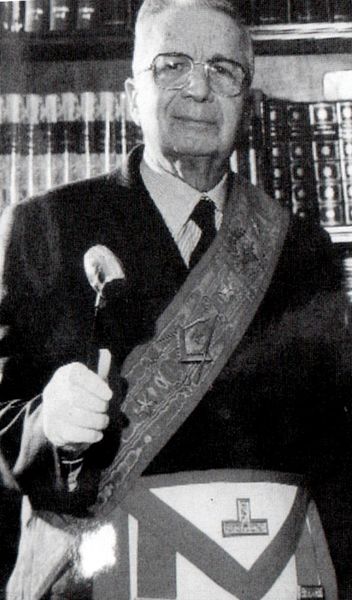 DG: Yes, that brings us back to Italian politics. Licio Gelli was head of this Propaganda Due, and the odd things about it was that it’s members were people from the Italian Parliament, the Media, banking and industry. They met in secret, and essentially functioned as a parallel Government, controlling events in such a way as to ensure that the communists never came to power. They would threaten journalists with the loss of their jobs should they ever print reports at variance with the P2’s agenda, or they might link up with criminals, or the Mafia, and get them to do their dirty work. Even Berlusconi was part of P2. Theirs is not the text-book democracy we are taught to believe, in which elected parliamentary representatives carry out the people’s wishes, the Executive Branch carries out the laws of Parliament, and, should anything go amiss, the Press is there to report on it and lay bare the facts before the people. I say, “Dream on; that’s for the birds!” If you look at history – real history – you very often find that power is abused by a very small minority who project the illusion that the people have a free press and a part in the power structure, whereas in fact you are dealing with an oligarchy. Oligoi is the Greek word for ‘just a few’, and I think that’s still true today. Those that control the international power game are the Few; and the Many – you, I and the listeners – may try to look behind the Curtain every now and again, but it will always be the Few that call the shots.
DG: Yes, that brings us back to Italian politics. Licio Gelli was head of this Propaganda Due, and the odd things about it was that it’s members were people from the Italian Parliament, the Media, banking and industry. They met in secret, and essentially functioned as a parallel Government, controlling events in such a way as to ensure that the communists never came to power. They would threaten journalists with the loss of their jobs should they ever print reports at variance with the P2’s agenda, or they might link up with criminals, or the Mafia, and get them to do their dirty work. Even Berlusconi was part of P2. Theirs is not the text-book democracy we are taught to believe, in which elected parliamentary representatives carry out the people’s wishes, the Executive Branch carries out the laws of Parliament, and, should anything go amiss, the Press is there to report on it and lay bare the facts before the people. I say, “Dream on; that’s for the birds!” If you look at history – real history – you very often find that power is abused by a very small minority who project the illusion that the people have a free press and a part in the power structure, whereas in fact you are dealing with an oligarchy. Oligoi is the Greek word for ‘just a few’, and I think that’s still true today. Those that control the international power game are the Few; and the Many – you, I and the listeners – may try to look behind the Curtain every now and again, but it will always be the Few that call the shots.
JC: This organisation – which I understand was a Masonic lodge, although I’m not sure how it was related to the rest of Freemasonry – was presumably also like the Mafia in some respects: manipulating people, blackmailing and so forth.
DG: Yes, very corrupt.
JC: Let me quote from your book. You describe Gladio as a “US-funded anti-Communist parallel government.” What evidence do we have that it was US-funded?
DG: We do know that the Propaganda Due was US-funded, and we do know that Operation Gladio received US funding. The funny thing that’s apparent from these Italian documents is that the British offered to train these secret forces in guerrilla tactics, à la James Bond, on condition that the Italians buy British weapons. And then the cunning Italians, seeking to profit from both sides, argued that they should get their armaments from the Americans because they were free, but their training from the British because the quality was better. Many documents substantiate that throughout the Cold War Washington and London were determined to keep Italy solidly within the NATO camp. That meant keeping the Communist Party – which was very strong, and which controlled a fair proportion of the Italian Parliament – out of the government. Thus, when the Italian Prime Minister Aldo Moro proposed bringing the Italian communists into the government, he was assassinated.
So, this whole idea that Europe was once unstable and violent, but since 1945 it has all been peace and transparency, is not exactly true. There were many terrorist incidents in Europe during the Cold War: politicians assassinated; right-wing dictatorships in Spain and Portugal; a military coup d’état in Greece; three military coupsin Turkey; terrorist attacks in Germany, Italy, France and Belgium. So, it’s rather superficial to view the European Union as a totally peaceful territory from 1945 onwards.
JC: Yes. Let me return to the Propaganda Due Lodge and this interesting character Licio Gelli. In your book you say that he was well-respected by the Establishment, certainly in the US; and yet he also had a Nazi past.
DG: Yes, he was like Gehlen: useful. If you think about it, Germany and Italy not only had Hitler and Mussolini as leaders, each had millions who supported them. So, obviously, after 1945 there were people who were still convinced that Mussolini and Hitler were right, and some of these people were considered useful and invited to the US and England to fight against the communists in Italy, Germany and other countries. Licio Gelli was invited by US Presidents, including Reagan; he played on a very high level, and nobody thought to say: “History shows this man to be directly linked to fascism.”
JC: Yes, you have a few paragraphs linking some amazing facts about him. You say that he fought for Franco in the Spanish Civil war; he became a Sergeant Major in the SS under Hermann Goering; and yet (according to evidence you present) it seems that General Hague and Henry Kissinger authorised him in 1969 to recruit four hundred high-ranking Italian and NATO officers into this P2 Lodge.
DG: Yes. If you still have the mindset that Washington would never co-operate with fascists, then obviously it’s difficult to wrap your mind around this. But once you abandon that belief, it’s easier to see the reality: geostrategic interests were key, and with communism as the new enemy it was considered necessary for American and British Secret Services to co-operate with fascists after 1945 in Germany, Italy and other countries. That’s basically the data that I have gleaned from my research into NATO’s secret armies. You’re absolutely right, though. If, today, you said to NATO, “I have a few questions for you: Did you ever cooperate with fascists? Were you linked to terrorism? Why did you set up secret armies without telling the populations?”, the NATO spokesman would just say: “That’s all conspiracy theory; we don’t respond to that.” NATO is not a transparent organization.
JC: Earlier you mentioned Turkey. This fascinates me, because Sibel Edmonds maintains that Turkey was always a very important aspect of this. Indeed, I think she says that Turkey was the most important centre for Gladio-like operations. She characterises the Turkish paramilitary as being linked with the Turkish Mafia, heavily involved in drug smuggling, that it received training from NATO, and that it carried out false-flag attacks. Do you agree with that? Do you think that Turkey was perhaps even more important than the Italian Gladio scene?
DG: I think Sibel Edmonds has done some good research on that. (I’ve never met her, I admit, but I’ve seen some of her YouTube videos.) The simple fact is, every researcher is limited by language barriers, and since she speaks Turkish, she is in a much better position to judge the situation in Turkey than I. However, we do know that during the Cold War Turkey had three military coups, and that the secret armies seem to have been involved.
Even with the Cold War over, there was still conflict within Turkey against the Kurds. Groups from the Grey Wolves and other groups from the Extreme Right were actively warring against part of the Turkish population, resulting in much loss of life. So yes, Turkey prompts a number of questions: What was NATO’s secret army doing in Turkey? Were they involved in the coups d’état? After all, with Turkey there is always this balance: it’s a member of a NATO, but it’s also a Muslim country. (People often forget this fact.) Turkey borders on Europe, the Middle East and Asia; so, historically-speaking, it has always been situated in two worlds. It was therefore in NATO’s interests to have a strong Turkish military in charge there, and this military engaged at times in secret operations, which Sibel Edmonds correctly criticises.
I mean, consider the Susurluk incident. Members of the Turkish stay-behind and members of a drug cartel were discovered to have been travelling together in the same car when it was involved in an accident. As a result of this scandal breaking in the Media, it was felt that the Turkish military was out-of-control, and there was much debate about the so-called Deep State (the uncontrolled military-industrial-complex) in Turkey, which they call Ergenekon (although they other names for it too). So, this shows that they tried to discover if the military had links to false-flag terrorism. So yes, Turkey is a whole new chapter, and certainly an important one.
JC: And Sibel Edmonds opens the “chapter” with the “heading” Gladio B, which I understand to be a kind of shift from false-flag activities with respect to left-wing groups in Western Europe, towards the manipulation of groups like the Mujahideen and Al-Qaeda. Do you think that’s a reasonable hypothesis?
DG: It is a reasonably hypothesis. During the Cold War, Gladio was tasked with fighting communism, but with the fall of the Soviet Union in 1991 this requirement was relegated to the history books. (Nobody’s fighting communism today. China’s a communist country [in name], but it has adapted magnificently to capitalism. Nobody cares much about North Korea, and Cuba is in transition. So, communism is no longer an issue today.) But what we do have today is Resource Wars: wars for oil and gas; and, obviously, the biggest resources – oil and gas – are in Muslim countries. If you look at Saudi Arabia – a Muslim country – it has huge oil resources. If you look at Iraq, which was attacked in 2003 (under the false pretext of having weapons of mass destruction that didn’t exist), you have to ask: Why was that attack carried out? To my mind, it was because of its oil. So, maybe Sibel Edmonds is right. Maybe we now have false-flag Muslim terrorism, for the purposes of discrediting and justifying the bombing of Muslim countries. Maybe Western secret services support certain militant Muslims to carry out their attacks, because it helps to shock Europeans and Americans into a fear of Muslims.
If we consider together the Northwoods documents and the Gladio history, and project this modus operandi forward to our present day, we must ask: “Do we now live in an age in which Muslim terrorists are being supported by Western secret services? Are governments framing Muslims in order to justify NATO’s bombing of Muslim countries, as they once intended to frame the communists with Operation Northwoods?” (I can’t prove this, but I think it’s important for us to investigate.) To allow, cause, or support the premises behind such attacks, would be a State crime. Maybe that’s the situation we’re in; I don’t know.
JC: So we might consider this Strategy of Tension as going hand-in-hand with the Responsibility to Protect (R2P) doctrine: first, you cause chaos through manipulating various groups; then, as a result of the humanitarian crisis, you claim justification for intervention, in order to ‘protect’ the people.
DG: Yes, that’s one way of doing it. Another way is to create a demonstration in the public square, and then shoot and kill some of the demonstrators in order to blame the Government, with the sole purpose of toppling it. That was done in the Ukraine on February 21st, 2014 – something we all witnessed barely twelve months ago. Obviously, the question is: Who were the snipers? Today, thanks to researchers into secret warfare, we know that those snipers on the Maidan in Kiev killed both demonstrators and police. Now, that’s strange. Researchers like me have to ask: Why would the acting President have his own policemen shot? (I don’t believe that; usually, they don’t do that.) And then, on that very day, the Government of Yanukovitch (the Moscow-friendly dictator or oligarch) fell, and was replaced by the new Government of Poroschenko (the Washington-friendly dictator or oligarch). These things are not in the distant past; they concern us today. Secret warfare has not stopped; it’s something we need to take into account most seriously when we consider international politics.
JC: You mentioned in passing the Charlie Hebdo attack. Do you think that could reasonably be interpreted as a Gladio-like operation? Paul Craig Roberts has grave suspicions about it, although he not prepared to say that it was. What’s your reaction to it?
DG: My reaction is that I have a lot of doubts. This terrorist attack was in two parts: One, the Charlie Hebdo offices; Two, the Jewish supermarket. (I’ll just address Charlie Hebdo, for the sake of clarity.) The official story is that two guys, who are masked so you can’t see who they are, kill twelve people and drive away. OK, it’s a simple story so far. But then (according to Swiss Media reports) they stop, change cars, and one of the killers leaves his identity card behind in the abandoned car. When I heard that I thought: “What a stupid mistake! That’s incredibly unprofessional.” It was claimed that the card belonged to Saïd Kouachi, one of two brothers, and so the Media immediately assumed that the second killer had to be his brother [Chérif Kouachi]. That’s a pretty flimsy conclusion. Saïd’s picture was then all over the news within twenty-four hours, being watched by people all over the world. As a consequence, the idea that Muslims are bad was reinforced, even though details of the attack were sketchy, simply on the basis of an ID. (Of course, Muslims, as a group, are not a bad people; nor are Christians, Jews, Hindus or atheists. Rather, the truth is that each religious group has criminals within it.) But now, with this attack in Paris, people have become suspicious of Muslims as a group – without really understanding what happened – all because of the supposed evidence of this ID card. Then people can become emotional and say, “They killed twelve people! That’s insane!” [And it is], but we must also remember 2011, when NATO bombed Libya and killed thirty-thousand people. The majority of those were Muslims. Isn’t it amazing how people in Europe can rightly cry over one group, yet say of the other: “Oh yes, thirty-thousand people; that’s not a big deal”?
 JC: Yes, I find it difficult to take this ID business seriously. In fact, I was reminded of that scene in the film Minority Report in which incriminating photographs are implausibly spread across a bed for anyone to find easily, and it’s described as an “orgy of evidence”. This seems like another “orgy of evidence”, rather like the passport that “miraculously” escaped from the Twin Towers.
JC: Yes, I find it difficult to take this ID business seriously. In fact, I was reminded of that scene in the film Minority Report in which incriminating photographs are implausibly spread across a bed for anyone to find easily, and it’s described as an “orgy of evidence”. This seems like another “orgy of evidence”, rather like the passport that “miraculously” escaped from the Twin Towers.
DG: Yes, these are difficult topics for any researcher to cover. For instance, the 9/11 attack happened over thirteen years ago, and you would expect historians by this time to have reached a consensus as to what really happened. It was 9/11 that started this whole so-called War on Terror. It started this angry, fearful period in which we unfortunately live, with this idea that Muslims are terrorists, or dictators with weapons of mass destruction, who are out to kill us all. So, obviously, people such as I, who specialise in secret warfare, must look seriously into 9/11.
And when I did look into 9/11, I found that the collapse of the Third Tower, Building 7 [WTC7], is absolutely mysterious. People simply remember 9/11 as that moment when two airplanes crashed into high buildings in New York. I have many friends who say they even remember where they were on that day. I mean, it’s very rare in history that people should remember where they were.
JC: I often consider 9/11, historically-speaking, to be the beginning of the 21st Century; perhaps a deep-state coup; the beginning of all these troubles; a step change into this new era. Do you see it as a deep-state coup?
DG: It might well be, but I’m not sure what really happened. I can only speak from what I have observed. I know that this picture of two planes hitting these two building and the buildings coming down is incomplete. All those who have never bothered to look into 9/11, should consider seriously the fact that three buildings collapsed on that day in New York. (I know that some people say they are tired with hearing about 9/11, but this is important to consider.) Three skyscrapers went down when there were only two planes involved. How can two planes topple three buildings? Then, when you find out that WTC7 was never hit by a plane, you start to wonder: “Why, then, did it collapse?” Then you hear people from NIST, the National Institute of Standards and Technology in the US, saying: “Well, it was fire that brought the building down.”
So, while I was working at ETH, a Swiss University, I asked experts in building construction and safety what they thought: “Do you believe that WTC7 was brought down by fires?” They replied: “Let’s see the evidence.” So, we discussed it. When they heard that WTC7 had eighty-one, really solid, steel columns, and that the NIST report claimed that Column 79 was destabilised by fire, they said: “That’s complete nonsense.”
JC: Yes, we’ve had Kevin Ryan and Tony Szamboti on the programme, and they both insisted that NIST’s explanation is not technically feasible. Tony Szamboti even said that crucial elements were left out of the reports. [external PDF]
DG: That’s it; and that troubles us as historians. I’m always trying to impress upon people that we historians work for the public, in the interests of the public; and we try to find out what happened on 9/11. First we had Bush and Cheney giving their version of events; but they’re politicians who lie a lot, so we can’t trust them. Then we had the 600-page-long 9/11 Commission Report which came out in 2004; but WTC7 doesn’t even get a mention, so we can’t use that either. So, then you have to consider the structure of the buildings and their safety features, and talk to architects and engineers. And then you discover that something is really wrong about 9/11. Now, while this rational intuition of wrongness is powerful, it doesn’t allow us to say for sure what sort of historical period we’re in. However, it does urge peace researchers to consider very seriously the subjects of false-flag terrorism and the manipulation of populations through fear.
JC: Yes, indeed. In fact, people do seem to be becoming more aware of the term ‘false flag’. About the time of the Boston Marathon bombing, I think, a Google analysis suggested that people were searching for that term more than ever before. I see that as a positive sign that awareness on this matter is growing.
DG: True indeed. People need the right language to enter new [conceptual] spaces. That’s been understood for a long time. If you don’t have the language to grasp a phenomenon, you’ll never understand it. If you only have the term ‘terrorism’, that will not get you very far; you need the term ‘false-flag terrorism’, which comes from the idea of raising your enemy’s flag in order to deceive. You also need the term ‘strategy of tension’, which means that it’s not only the murdered and injured who are victims of terrorism, but also those who observe the carnage and who are left in shock. They have tension inside them, which is actually the aim of the terrorist attack. After all, you can’t do much with the dead, but you can make those who witness terror, and who are in a state of shock, more willing to sacrifice their civil liberties.
JC: Yes, it’s not just a combat operation; it’s also a psychological operation.
DG: It is in essence a psychological operation, because that allows the authorities to say: “We need more money for defence, or to fight a war in Syria, or to bomb Libya or Iraq.” And people start to think: “Yes, maybe that’s a good idea because evil people live there”. This is war propaganda, and it has always followed this maxim: Enter the mind of the Home Front; because, ultimately, it’s the taxpayers who decide whether to leave or stay in NATO, or whether NATO should be enlarged, and other such questions.
JC: Or if NATO should be audited (if that were even possible).
DG: Yes, that’s a good idea.
JC: Anyway, we’ve been talking about many dark things here, so let me ask: Do you see hope in this growth of public awareness about issues like this?
DG: Yes, very much so. I’m glad you brought that up. When I teach my students, I always tell them that secret warfare is a very fascinating subject. However, when we consider the spiral of violence, it is only a very small minority of the world’s population that’s actively engaged in torture, terrorist attacks, and bombing other countries, etc. If you lump together all the people who are fighting in Ukraine, the Islamic State, the terrorists in Paris and New York, they are really very few in number, and yet they manage to keep us all worrying.
What I want to stress is this: My personal belief is that human beings are wonderful. Normal human beings are not about to kill you, behead you or blow you up. Not at all. Check among your friends. Who do you know who has raped somebody, or shot someone in the head? Who would find satisfaction in bombing or torturing somebody? When we think about our network of friends and family network, the vast majority of us will find nobody like this. The overwhelming majority of people simply want to get on with their lives, earn some money, listen to music, fall in love, lie on a beach. Humans beings are friendly. (We’re rather lazy actually; we like to relax!) Then they go and ruin it all, by shocking us with these terrorist attacks.
JC: Yes, the element of shock is key to all this; and that’s produced through the manipulation of information. That being so, if people could gradually become more aware that these events are being manipulated by the Media, then we would be better able to say to ourselves: “No, I refuse to believe that this evil is characteristic of the whole world. OK, there’s been an atrocity, but I must remember that I may well be subject to manipulation too.” If enough people could become conscious of this, maybe its power might eventually disappear.
DG: Yes, because we’re in the middle of a fight for our minds and hearts. So long as it’s possible to shock people into hate and fear, you can ask them: “Give me 5% of GDP for defence.” But with greater awareness people would be able to say: “No, I need money for my kids’ education, and I want better schools.” No doubt they would then say: “You can’t have better schools, because the terrorists are out there, and they’re going to kill you.” Then you would have the mental freedom to respond: “No, I don’t believe you. I won’t give money to the military-industrial-complex which has bombed Afghanistan for fourteen years. What good have you done there? Show me your record. What good have you done in Libya? It’s a total mess. Look at Iraq! That’s another mess.” So, I think people are waking up and using their heads. But the problem is, the mainstream media is not good at taking a critical look at NATO and manipulated terrorism. Unfortunately, they usually offer a very superficial narrative; and that’s quite scary.
JC: Well, thank heavens we have the alternative media, and I’m very glad that you’ve been able to come on today to talk on this very small corner of the alternative media, Dr. Ganser. It’s been great to have you on. I’ve been looking forward to this interview for quite some time, because unfortunately we had to postpone it a number of times for one reason or another.
DG: Yes, it’s been so busy. But now we’ve taken the time, and I think we managed to cover the subject in considerable detail. So, I hope your that listeners will profit from it, and that they will read more about it, while keeping an open and peaceful mind. And remember, the world is not an evil place.
JC: Yes, it’s been a wonderful interview, you’ve given us masses of information, and, to echo what you say, I do hope people will follow up on this. So, finally, thank you very much indeed for agreeing to spend your valuable time with us today.
DG: Thank you, Julian Charles. Good luck to you.
JC: Thank you.
DG: Ciao Julian!
JC: Bye-bye.
Images:

















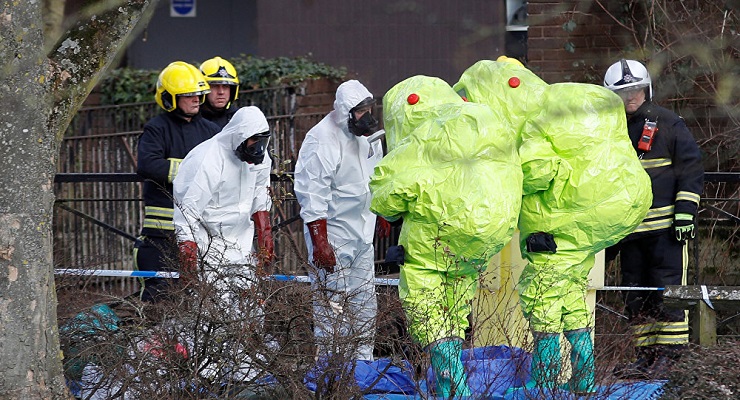


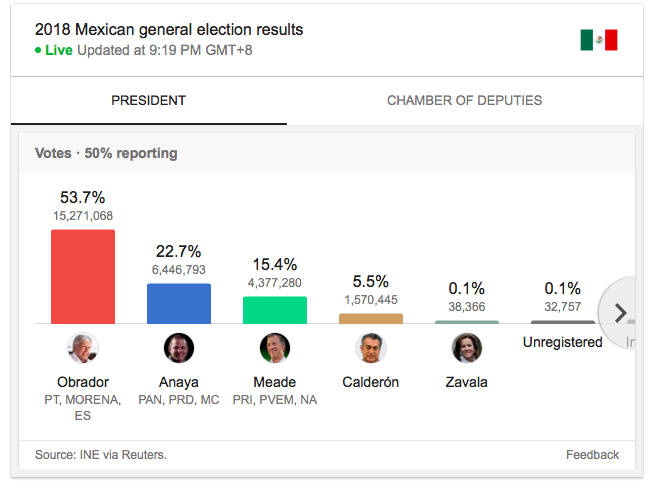



 Can you
Can you 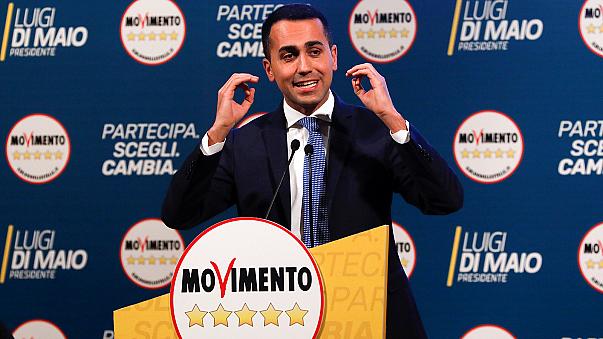











 JC: And the answer is: because they were useful.
JC: And the answer is: because they were useful. DG: Yes, that brings us back to Italian politics. Licio Gelli was head of this Propaganda Due, and the odd things about it was that it’s members were people from the Italian Parliament, the Media, banking and industry. They met in secret, and essentially functioned as a parallel Government, controlling events in such a way as to ensure that the communists never came to power. They would threaten journalists with the loss of their jobs should they ever print reports at variance with the P2’s agenda, or they might link up with criminals, or the Mafia, and get them to do their dirty work. Even Berlusconi was part of P2. Theirs is not the text-book democracy we are taught to believe, in which elected parliamentary representatives carry out the people’s wishes, the Executive Branch carries out the laws of Parliament, and, should anything go amiss, the Press is there to report on it and lay bare the facts before the people. I say, “Dream on; that’s for the birds!” If you look at history – real history – you very often find that power is abused by a very small minority who project the illusion that the people have a free press and a part in the power structure, whereas in fact you are dealing with an oligarchy. Oligoi is the Greek word for ‘just a few’, and I think that’s still true today. Those that control the international power game are the Few; and the Many – you, I and the listeners – may try to look behind the Curtain every now and again, but it will always be the Few that call the shots.
DG: Yes, that brings us back to Italian politics. Licio Gelli was head of this Propaganda Due, and the odd things about it was that it’s members were people from the Italian Parliament, the Media, banking and industry. They met in secret, and essentially functioned as a parallel Government, controlling events in such a way as to ensure that the communists never came to power. They would threaten journalists with the loss of their jobs should they ever print reports at variance with the P2’s agenda, or they might link up with criminals, or the Mafia, and get them to do their dirty work. Even Berlusconi was part of P2. Theirs is not the text-book democracy we are taught to believe, in which elected parliamentary representatives carry out the people’s wishes, the Executive Branch carries out the laws of Parliament, and, should anything go amiss, the Press is there to report on it and lay bare the facts before the people. I say, “Dream on; that’s for the birds!” If you look at history – real history – you very often find that power is abused by a very small minority who project the illusion that the people have a free press and a part in the power structure, whereas in fact you are dealing with an oligarchy. Oligoi is the Greek word for ‘just a few’, and I think that’s still true today. Those that control the international power game are the Few; and the Many – you, I and the listeners – may try to look behind the Curtain every now and again, but it will always be the Few that call the shots. JC: Yes, I find it difficult to take this ID business seriously. In fact, I was reminded of that scene in the film Minority Report in which incriminating photographs are implausibly spread across a bed for anyone to find easily, and it’s described as an “orgy of evidence”. This seems like another “orgy of evidence”, rather like the passport that “miraculously” escaped from the Twin Towers.
JC: Yes, I find it difficult to take this ID business seriously. In fact, I was reminded of that scene in the film Minority Report in which incriminating photographs are implausibly spread across a bed for anyone to find easily, and it’s described as an “orgy of evidence”. This seems like another “orgy of evidence”, rather like the passport that “miraculously” escaped from the Twin Towers.


![Goodbye, Europe? Hello, Chaos?: Merkel's Migrant Bomb by [Springmann, J. Michael]](https://images-na.ssl-images-amazon.com/images/I/51nCU9C3kQL.jpg)

